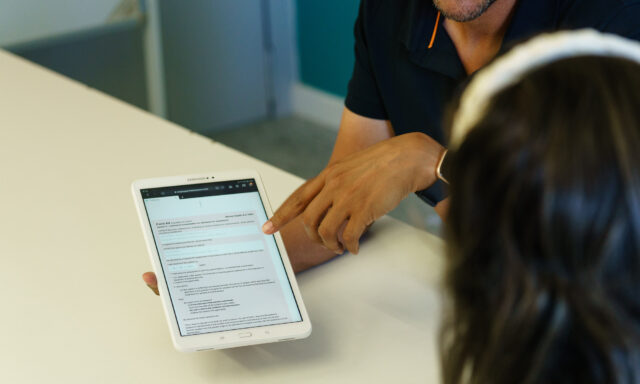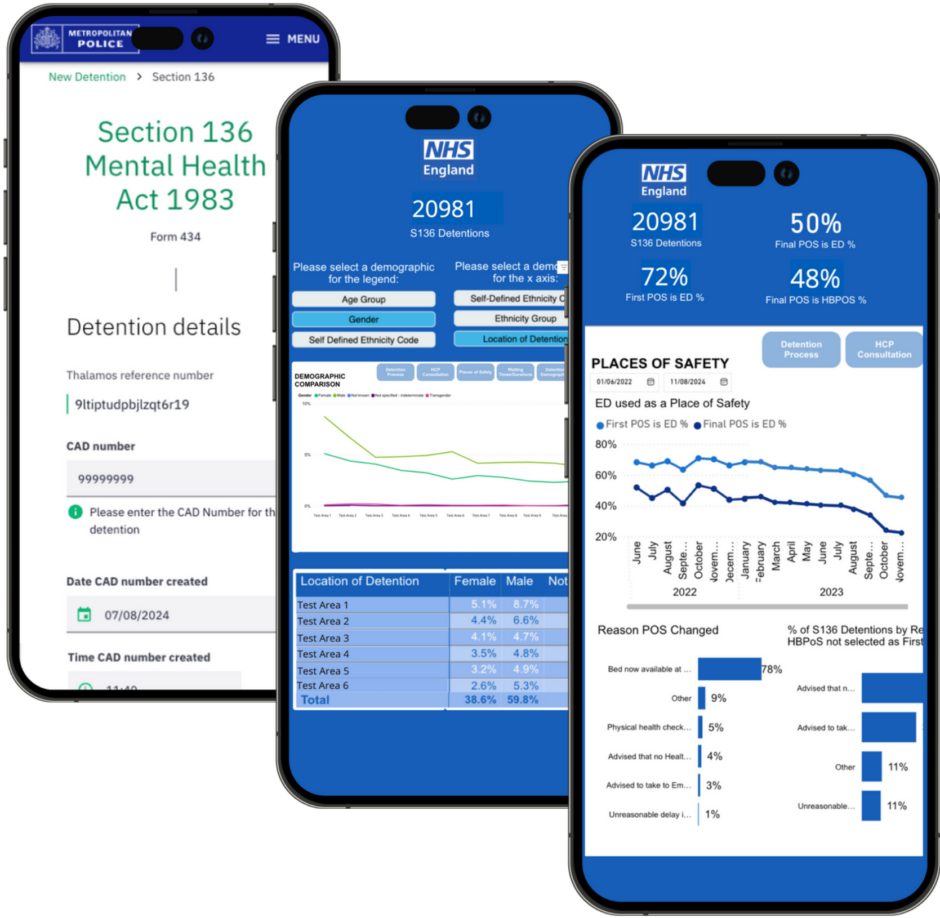Police
With better sign posting and streamlined collaboration with health and social care partners, patients and police officers are much better served to find the quickest and safest solution.
Targeted support
Thalamos 136 has revolutionised the Section 136 pathway for patients, police officers, and hospitals. With a dedicated app on their device, police can convey a patient to the nearest available health based place of safety more quickly.
Place of safety identification is swifter, facilitating a formal handover of care to health and care colleagues so police officers can be back in service up to 10 hours more quickly for every S136 incident.
Thalamos 136 is now able to deliver data and operational insights previously impossible to report on due to paper-based systems.
Benefits
- Interoperable readiness
- Reduce time to incidents
- Richer system wide data accuracy to inform strategic decisions to improve patient outcomes and services
- Reduce number of 136 detentions
- Reduce officers time spent on Mental Health
- Time saving on administration
- Protection for patients and their data
- Support innovative initiatives (such as RCRP)
- Improve partnership working with health and social care, as well as partnership organisations
- Webley compliant handover
Case Study

Metropolitan Police Service (MPS)
In 2021 the Metropolitan Police commissioned Thalamos to deliver a digital Section 136 solution to improve processes and, in turn, the experience of the individual in crisis. Approximately 4,500 people are admitted via Section 136 across London each year, which, on average, takes up 8 hours of police time each time. The project sought to achieve a range of benefits, including improved patient safety, efficiency, error reductions, form accessibility and activity data.
What we delivered
The digital solution (Thalamos 136) enables a police officer to complete all aspects of the 136 form digitally on any device. All required information is input, including medical clearance, for sharing with the HPBOS/ED to enable an auditable and Webley Protocol compliant handover of care.
Thalamos 136 was designed around the often chaotic practicalities of police involvement in mental healthcare, including changing HPBOS’s and officer shift changes. Through the live testing and trial approach multiple further scenarios were identified, and then accommodated within the workflow.


How we successfully achieved this
The project spanned a range of NHS stakeholders and sites including NHS England, nine mental health trusts and eighteen acute trusts in the London region, which required significant engagement across the different parts of the London care system.
The project commenced in September 2021, with work progressing to a live testing phase in January 2022 across three London boroughs. The live testing phase gave the wider group valuable opportunities to observe the complex reality and different scenarios across multiple parts of the system. This served as an opportunity to gain critical contextual understanding and then drive assurance to support strong governance, and confidence for end users.
Following the successful live testing phase, and sign-off in early 2022, full roll-out across London began in May 2022.
Time saving benefit
MPS were able to reduce police involvement in Section 136 by a third over the first twelve months in one particular London area.
Cost saving benefit
Average duration from police entering first place of safety to NHS digitally accepting patient legal responsibility reduced by two hours.
Operational benefit
Reduction of five hours of average police involvement per Section 136 incident for for one London trust, with £2.9m saved.
We believe that there should be no distinction or disparity between emergency physical and mental health care as exists currently.
